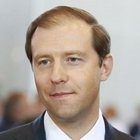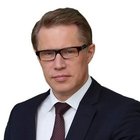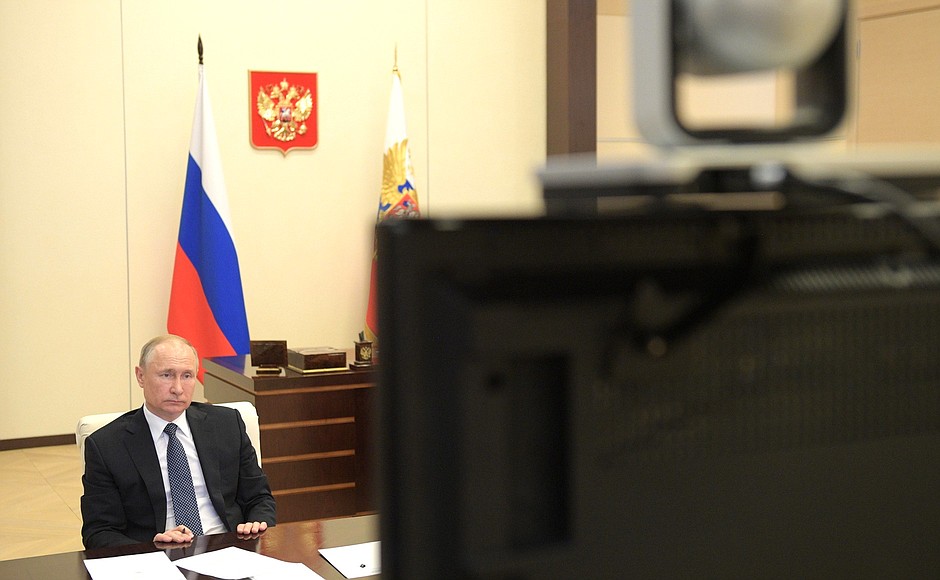
The videoconference meeting was attended by Alexander Gintsburg, Director of the Gamaleya National Research Centre of Epidemiology and Microbiology; Vadim Govorun, Director of the Federal Research & Clinical Centre of Physical-Chemical Medicine; Ivan Dedov, President of the National Medical Research Centre for Endocrinology and Chief Visiting Endocrinologist of the Russian Ministry of Health; Vladislav Karkishchenko, Director of the Scientific Centre of Biomedical Technologies; Vladimir Kutyryov, Director of the Mikrob Russian Anti-Plague Research Institute; Rinat Maksyutov, General Director of the VEKTOR State Research Centre of Virology and Biotechnology; Andrei Svistunov, First Vice-Rector of the Sechenov First Moscow State Medical University; Dmitry Sychyov, Rector of the Russian Medical Academy of Postgraduate Education; and Viktor Fomin, Vice-Rector of the Sechenov First Moscow State Medical University.
* * *
President of Russia Vladimir Putin: Good afternoon, colleagues.
Can you hear me, see me?
Reply: Yes, Mr President.
Vladimir Putin: Excellent. I can hear and see you too.
Taking part in our meeting today we have researchers, experts and professionals whose opinion is crucial for the development of the necessary decisions to fight the coronavirus infection.
We are monitoring the situation very carefully and we are taking into account both the positive and the negative experiences of other countries. I would like to reiterate that we have not seen the peak of the epidemic yet. Now it is very important to avoid repeating others’ mistakes, rather than learn from our own, to draw a lesson and make conclusions based on the position of the medical, scientific society.
I would like to hear the opinions of our experts today. First of all, I would like to give the floor to our colleagues, experts in virology. It seems that all of us have become virologists, the entire country. But the opinion of true experts is extremely important because authorities at all levels base their actions on the opinions of those who have devoted their lives to this complex, important and responsible work.
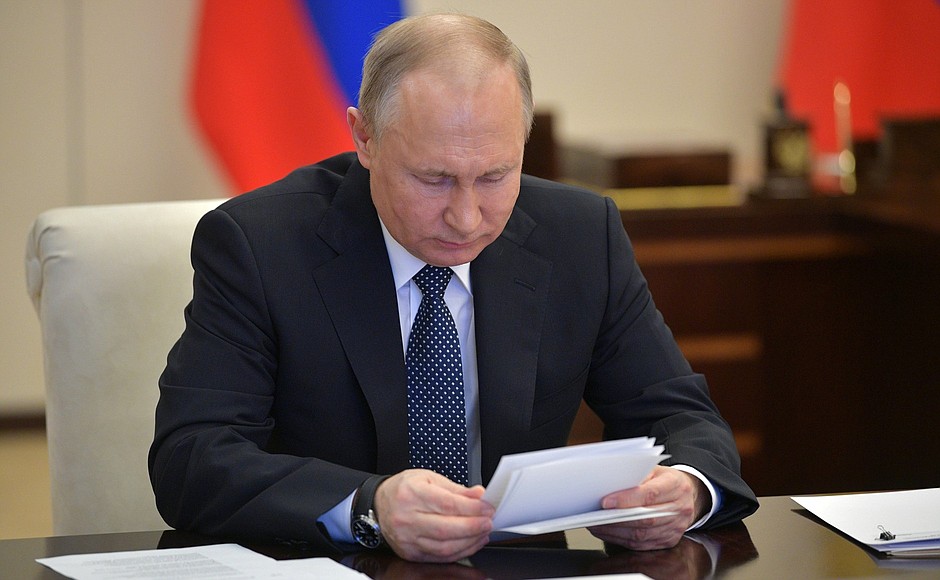
I will mention it again: all our actions must be proportionate to the threat and adequate to the situation. The most important thing here is the safety and health of Russian citizens. At the same time, it is crucial to provide conditions for a quick recovery of economic and business activities.
I would like to hear what my colleagues, who will have the floor now, think about how appropriate our actions are regarding the period of mandatory non-work days. In this regard, it is very important to hear out your opinions, friends. Do you think it will be possible to decrease the number of days during which many enterprises in Russia are not operating and do it soon? What is your prognosis for the short term?
There is another issue I would like to discuss. As I have said, specialists believe that the regime of restrictions and self-isolation is the most effective measure to break the chain of transmission. At the same time, we understand very well that protecting people, especially those in the risk groups, such as the family members of those infected, doctors, nurses, and hospital and clinic staff who are helping people and facing the threat of infection, of course, means providing them the necessary aid and support.
I know that our specialised agencies together with virologists, pharmacologists and doctors are working very hard on a special prevention system, including developing vaccines and effective methods to treat the coronavirus infection and its complications. Today, friends, I would like to hear your opinions on this issue as well as your assessments of the prospects of creating such medicines.
Let us begin our meeting.
<…>
Colleagues, this is how I think we should proceed: I will give the floor to the specialists whom I asked to come today and then we will exchange opinions and continue our conversation in an absolutely free mode.
Now I would like to give the floor to Vladimir Kutyryov, Director of the Russian Mikrob Antiplague Research Institute.
Mr Kutyryov, please.
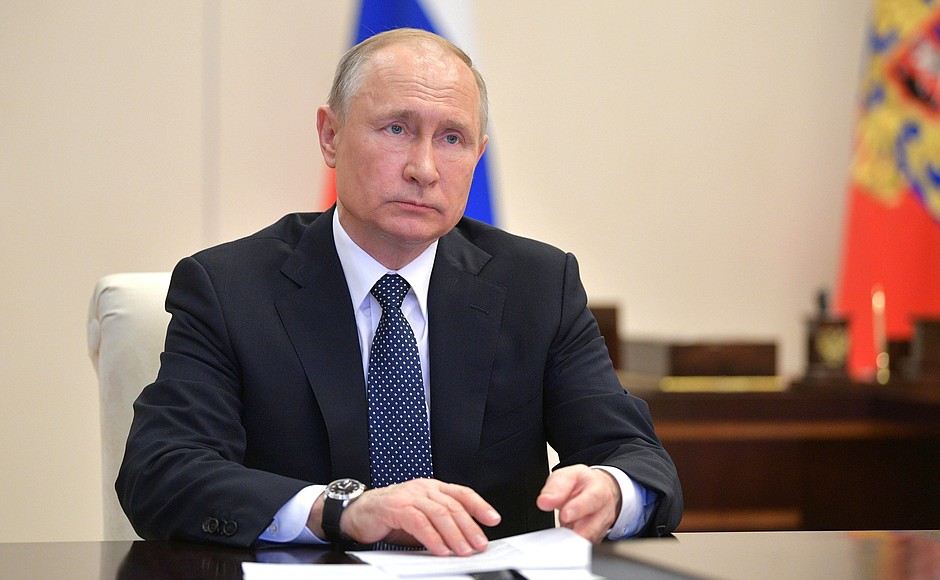
Vladimir Kutyryov: Thank you.
Mr President, colleagues,
Thank you very much for the opportunity to speak here and discuss matters of a medical nature at your level.
I would like to start by quoting you. At a meeting with young people in Cherepovets on February 4, which was attended by an employee of our Mikrob Anti-Plague Institute, which is at the forefront of fighting the most dangerous infections, and we have 19 of these, you replied to her that yes, Russia and the Soviet Union had highly competent experts that allowed the country to counter epidemics and pandemics and that this experience is being used today These are wonderful words and we fully support and share them.
In this context, I would like to say that pandemics take place in the world about every 10 years. For example, the 1957 Asian flu, the 1967 Hong Kong flu, etc. The last pandemic took place in 2009 with the swine flu virus. I must say that at that time, there were no adequate means of diagnosis or prevention and we had to work on them literally by hand.
Nevertheless, a specific feature of previous pandemics was that all measures were taken on a national scale. It was not happening like it is today. We believe that today there are two overlapping problems – globalisation and an epidemic that has turned into a pandemic. We probably do not have the competence to speak about the two main issues that have put the world on the brink of an economic crisis. Therefore, we will say a few words about the medical aspect of the problem.
The thing is, currently this new infection is not characterised as a highly dangerous infection but as a potentially serious acute viral respiratory infection. This is why the model our predecessors have developed to counter such infections is absolutely adequate in the current situation.
What are the peculiarities of the new infection? First, its structure. Over 80 percent of cases are mild, 15 percent are severe and five percent are critical. The main feature is that asymptomatic carriers with no clinical presentation can pass on the virus. This is the feature that defines this entire situation.
Another important feature is that the latency period is 14 days. While flu takes 3–5 days, this infection takes 14, which is quite a long latency period. For the most part, this is why the anti-epidemic measures were taken.
To date, the entire world has been relying on a well-known model showing that if restrictive measures are not taken against acute viral respiratory infections in time, they will spread and the morbidity will spike sharply, as we can see today.
This is why today we have three main models: the passive model to counter epidemics, which we can see in Africa and some countries; the tardy model that could clearly be observed in both Europe and the United States; and the advanced model with anti-epidemic measures that we can see in the Russian Federation, Singapore and several other countries.
Where is this manifested? For example, on December 31, 2019, the Russian Federation started monitoring developments in the People’s Republic of China. This was the instruction we received from the head of our agency, and we are still doing this: we are monitoring and giving recommendations.
Moreover, Russia began taking preventive measures back in January 2020, which made it possible to basically prevent the arrival of the ill and infected in the first phase, which is unprecedented and had a very important effect.
The second, proactive stage involved monitoring the developments in South Korea, Italy and Europe, and Iran. The preventive measures taken by the Government following your instruction, Mr President, in fact allowed the Russian Federation to limit the flow of infected people into Russia in the first two phases (there are four phases in total) and, thus, give the health systems almost three months at least to get prepared.
The next stage in the progression of the epidemic process and what we are observing. Of course, there are new patients today, as there should be according to the logic of the epidemic process, which has been around for a long time and is well-known, and proactive measures are being taken. I would especially like to emphasise that what was done in late March – the announcement of the so-called holiday, although we all understand very well that this is the stage of limiting contact with others, which is the most important factor in breaking the epidemic chains and the epidemic process – is having an impact.
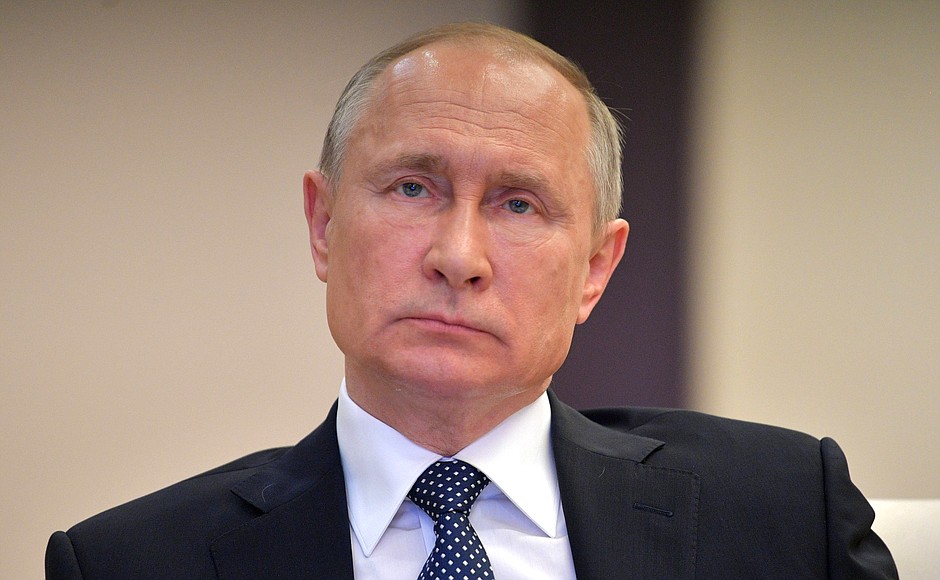
While cases continue to grow internally, we are monitoring and recording the results, taking into account the incubation period. We will see the result of this restriction in a week – a decrease in the incidence rate or further growth.
In this regard, it is very important today to continue the great work that is being carried out in the Russian Federation with respect to preventive actions, and this is primarily what we talked about, what is happening – social distancing.
And of course, the risks. The risk group is older people primarily; work is underway, people are self-isolating. The practice of foreign countries shows that family clusters develop, and anti-epidemic and preventive measures are taken for family clusters.
Of course, as you just mentioned, medical institutions are one of the biggest risk groups. Therefore, we do a lot here to train personnel at medical institutions in terms of following proper procedures and ensuring biological safety.
Another very important aspect, which has been running parallel to this whole story, is the expansion of diagnostic capabilities. While during the first stage back in January we developed a test system that made it possible to efficiently identify coronavirus cases, today this process is expanding and improving; nine test systems have already been created and registered, and even private medical labs have joined laboratory diagnostics.
I would like to say that we are working hard. In Moscow, our employees are working in shifts. Mr Sobyanin asked us to train laboratory specialists in biological safety and we have done this in full. And of course we should promote this process.
I would like to emphasise once again that the measures taken in Russia have allowed us to create a period of three months aimed at forming and preparing our medical system for treating patients. We must comprehensively continue the policy on social distancing. We will see the effects in a week, primarily in Moscow.
It is most important today to observe and expand our methods of laboratory diagnostics for this disease so we can understand how people become infected. These asymptomatic forms are very important. Like any complex issue, there are two sides. Firstly, we have latent immunisation and secondly, the negative aspect that they may pass the infection to others.
And one more point. Our institute is involved in work conducted by the agency to develop recommendations for plants and factories so that once stage-by-stage sanitary and epidemiological control is established, the employees will be able to work. There is understanding of how to do this and I believe at our institute we will prepare such recommendations for plants and factories.
Briefly, this is what I wanted to say.
Thank you again.
Vladimir Putin: Mr Kutyryov, what about the people that have been infected but have no symptoms? Is it possible to identify them in laboratories through testing?
Vladimir Kutyryov: Yes, of course. Our tests have now become much more sensitive. It is very important to expand laboratory diagnostics in two ways. We must not only identify the source of infection but also, as we have been saying, the antibodies.
So, what is happening? People who are infected but have no clinical symptoms are developing immunity. We must find out how this layer of immunity is forming.
Vladimir Putin: Mr Kutyryov, how do you see the development of the situation in this country? This period until the end of April, the period of forced time off, what do you think of it? Can it be reduced? Or is it too early to say?
Vladimir Kutyryov: Mr President, I think we can return to this question in a week when the incubation period after social distancing ends. Then we will be able to better understand the trends with this disease.
Vladimir Putin: Thank you very much. Thank you, Mr Kutyryov. I appreciate it.
Sechenov First Moscow State Medical University, Deputy Vice-Rector Viktor Fomin, the floor is yours.
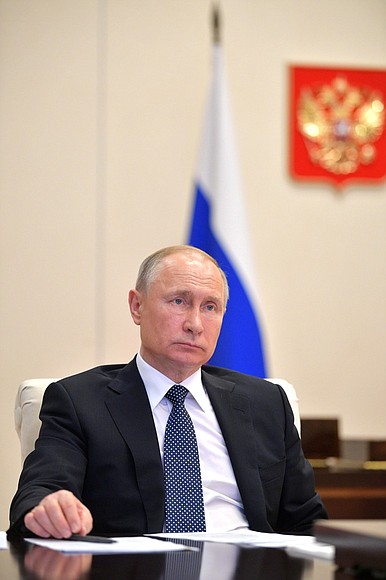
Vice-Rector of the Sechenov First Moscow State Medical University Viktor Fomin: Mr President, colleagues,
Social distancing plays a crucial role in curbing the epidemic process. Equally important is expanding the reach of testing, and we are already working under these conditions. Test systems are being produced in sufficient amounts, the availability of laboratory support, especially for all medical facilities operating in Moscow, is basically meeting our needs and expectations. However, in healthcare, a radically different regulatory foundation has been required since the onset of the epidemic, and it has been promptly developed by the Health Ministry of Russia.
We now have a clear understanding of the process of organising treatment for these patients, we clearly see what kind of material, technical and personnel base we need. Special focus has, of course, gone to the protection of medical personnel. And these regulatory documents are being constantly updated in view of the current situation and best world and domestic practices.
Without a doubt, it was critically important that the Russian Government’s resolutions made it possible to significantly speed up registration procedures for new medicines and medical items. Therefore, doctors who want to do their utmost to save their patients can stay within the confines of law. It is obvious even now, that organising medical treatment for such patients goes beyond our routine schemes of helping patients with other infectious diseases.
Complications from the coronavirus infection, such as pneumonia, can be a greater threat to the patient than the infection itself. In this respect, it is crucial that doctors of most clinical specialties are now legally allowed to treat coronavirus patients. This is the most important guarantee of quality of treatment.
Naturally, doctors who have not worked with infectious patients must undergo training, and within a very short time, and with coordination from the Health Ministry, educational resources have been created that are mandatory for medical workers, but they can do it online without leaving their workplaces.
The ultimate historical experience of all epidemics shows that they can be defeated by centralised resource management. To date, we have introduced a system to quickly provide reports by region. The Healthcare Ministry has a system to dynamically analyse the health of patients under treatment.
This information makes it possible to assess how effective the treatment plan is for every patient. After this analysis, we update the guidelines on the prevention, diagnostics and treatment of the novel coronavirus infection. This will serve as the basis for Russian clinical research in this area.
In general, everyone who works at a patient’s bedside understands that the search for new ways to treat the coronavirus has become the priority today. The most serious patients with the coronavirus infection are patients in need of respiratory support and patients with pneumonia as a complication. In the Russian regions, they are treated with methodoligical guidance from federal remote intensive care centres established at the leading institutions of the Healthcare Ministry. There are five such centres: two for adults, one for pregnant women, one for children and one to coordinate the work of onsite teams.
If necessary, leading experts such as pulmonologists, anesthesiologists, intensive care experts, infectiologists, paediatricians, obstetrician-gynaecologists and perinatologists are ready round the clock to provide virtual or onsite consultations where needed.
The experience of the Sechenov University Centre – we have patients with pneumonia in need of respiratory support and already work with 30 Russian regions – shows that these cases are very severe, with almost 80 percent of them on ventilators right now. By analysing these patients, we will soon be able to describe patterns in the clinical development of the coronavirus infection that will somehow differ from the global ones.
Of course, the elderly are the hardest hit. But we can see that almost 20 percent of those put on ventilators are under 45. What is the difference? They have chronic diseases, not only lung and cardiovascular diseases, but some are oncological patients and are receiving treatment, while others have renal failure, and obesity, and type 2 diabetes, which makes proper respiratory support very difficult. The record among our patients is a female patient weighing 160 kilogrammes.
The concentration of the material, technical, resource and personnel base in healthcare is achieved today by repurposing hospital beds, and there are clear requirements for these beds: at least 70 percent of them must be equipped with oxygen. This is very important because the onset of the disease can quickly develop into respiratory failure. More than one-third of these beds are fully equipped resuscitation beds.
Federal institutions are also actively involved in the provision of medical assistance, as they have sufficient equipment and, most importantly, highly qualified personnel. Thus, for Moscow residents, a total of 10,317 beds are being provided at institutions under the Ministry of Health, the Federal Medical-Biological Agency, the Ministry of the Interior, and the Ministry of Education and Science. Non-governmental medical organisations are also involved. In April, Sechenov University began providing beds to treat coronavirus patients.
And again, as to whether we need isolation and social distancing: yes, we do. Among our patients in intensive care, we can see several examples of the fact that group incidence in elderly patients, and these patients progressed from mild symptoms of acute respiratory viral infections to the need for ventilators in a very short period of time, group incidence is associated with casual observance of self-isolation: someone gets sick and spreads the virus to others at social, cultural, creative and other events.
And the second thing I would like to say, Mr President, is that this new reality in infectious diseases will certainly require us all to think about upgrading our specialised hospitals in the future. These hospitals should be fully prepared to receive patients with lung diseases of infectious origin.
Thank you.
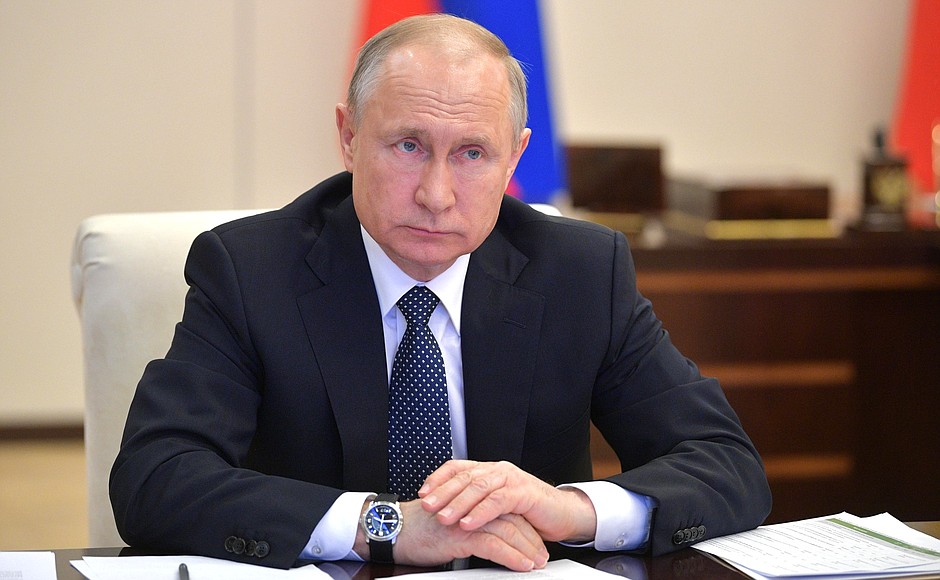
Vladimir Putin: Thank you very much. Thank you, Mr Fomin, for you recommendations and proposals.
Regarding the protection of medical worker, it is a very important matter. We spoke about it yesterday and today with the Minister of Industry, Mr Manturov.
Mr Manturov, will you please comment on what the Ministry and the Government in general are doing to address this issue.
It is clear that manufacturers were not preparing spe4cifically for what we are now going through, but what is being done in general? We will speak about that with the governors tomorrow, we have an array of possibilities, I mean among other things purchasing, if needed, through imports.
Go ahead, Mr Manturov.
Minister of Industry and Trade Denis Manturov: Thank you very much, Mr President.
Colleagues,
I will start with personal protection equipment. As of today, the daily output by Russian enterprises has reached almost 1.6 million surgical masks which can be used in medical facilities. In addition, gauze masks are now being produced which have a medical certificate. We are set to reach a daily output of 2.1 million by around April 20.
Besides that, practically all regions have managed, by engaging micro and small businesses, to reach a total of nearly 2.4 million masks made of various non-woven materials per day. To be honest, we did not expect that.
We did not stop at that, we are now using non-woven material as a base, the so-called SMS (Spunbond Meltblown Spunbond) fabric and sending rolls of it to textile factories so as to have two types of products made from it. First of all, we will continue to increase the production of masks, by mid-April we are set to produce about 200,000 more masks.
But the major issue is protective suits which you, Mr President, pointed out today. There is indeed a shortage of them. Unfortunately, we have never produce them in such quantities; these companies were specialising in manufacturing radiation-resistant suits and suits for the chemical industry. Until now, we have been producing no more than 6,000 medical suits.
We understand how to increase the production up to 25,000 suits. Unfortunately, we do not have domestically made material to produce more. There are two companies that make these non-woven fabrics from granules, and we expect them to allocate all of their inventory to produce protective medical equipment at the expense of other industries and other areas of the economy.
At the same time, we have purchased 51 million masks in China and delivered them to the regions. At this very moment another 21 million masks are being loaded in Shanghai, they will arrive at Chkalovsky airport tonight. We work in the same vein with respect to Tyvek-type suits. Overall, we have already imported almost 250,000 suits and they have been shipped to the regions. The other day we signed a contract for another 1.05 million suits. Unfortunately, we see from the data from the regions and from Roszdravnadzor, that the regions have 500,000 whereas they need 800,000. So we are about 300,000 suits short.
This is why we are working with another Chinese state corporation on more. Unfortunately, they cannot confirm the availability of hoods for these suits, So if we get the confirmation on hoods, we will be ready to sign the contract.
Goggles are an integral part of the suit. Daily output has been increased from 4,500 to 12,000; by mid-April we will be producing 22,000 a day.
It is the same with respirators. We expect an output of 20,000 respirators a day. They had been designated for industry, but Roszdravnadzor reached out to us and after a short series of tests we have designated seven II and III class respirator models as medical equipment.
We have a serious shortage of ventilators. But to be honest, last October we were thinking how to repurpose one of the Concern Radio-Electronic Technologies enterprises and even suggested shutting down production there. Thank God we didn’t. Today, we produce almost 80 ventilators a week. We must make almost 90 ventilators in the period from yesterday to Sunday. Next week we must produce about 200 devices, and we want to increase their production to 1,500 per month.
The biggest problem is spare parts. We have many suppliers, including the US, Italy, Switzerland and the Netherlands. Yesterday we received the first samples of reducers as spare parts from China so that we can try them out and test them until the end of the week to be able to replace them with other suppliers. They have stopped everything in the Netherlands. Regrettably, Switzerland is also stopping to ship. We have signed a contract with the Italians but for just 2,000 sets. The Americans confirmed a contract with Honeywell for almost 2,000 units. So, we are hoping to have enough for April and May and will be gradually looking for a replacement.
Out of 17 medications recommended by the Healthcare Ministry for countering the coronavirus, we have full-scale production of 14. We believe these and other medications will meet the healthcare system’s needs. In parallel, we are working with our Chinese colleagues to produce not only substances but also finished medical products in case we have to increase supplies.
Thank you.
Vladimir Putin: Thank you.
We will return to this issue, and I have already asked you to submit wide-ranging proposals that cover all of these positions, including reserves, particularly in the regions. They have enough enterprises that can be quickly repurposed.
You said you are ready to give these materials and fabric for medical purposes at the expense of other industries but in this context medicine is not just an industry. Nothing is more important for us than human life. This has to be our approach.
I would like to hear from Mr Maksyutov, General Director of the Vektor State Research Centre of Virology and Biotechnology. Go ahead, Mr Maksyutov.
General Director of the Vektor State Research Centre of Virology and Biotechnology Rinat Maksyutov: Mr President, thank you for the opportunity to report on the major results and our short-term plans to counter the novel coronavirus infection.
As the threat of the spread of the coronavirus became clear, the Vektor State Research Centre immediately began working out diagnostic, vaccine and medicinal agents. The first two diagnostic PCR kits were designed within five days following the publication of the first whole genome sequence of the new coronavirus, and by January 24, the production was launched and deliveries were made to the network of diagnostic laboratories in the regions. As of today, April 7, we have produced and supplied to all regions test systems for over 2 million tests, and now, in addition to those two, test systems from seven more Russian producers have been developed, registered and launched.
Also, an EIA test system has been designed which identifies novel coronavirus antibodies. This test makes it possible to understand if a person had the virus or not, and thus, to assess a community’s immunity and study the effectiveness of the vaccines being developed. We expect this EIA test system to be registered by April 10, and as early as April 13 we will ship the first allotment of kits for 20,000 tests to the regions. A finger prick blood sample is all that’s required for the test, and results for 90 people can be obtained within two hours.
As for the study of the virus itself, the first genome of the virus was deciphered at the Vektor back on February 20 this year and currently the genome sequences for 55 viral isolates have been identified, those that are circulating in the Russian Federation. An analysis of all the genomes shows a very high level of identity, over 99.9 percent. Viral isolates are being sequenced in Russia on a permanent basis. We can confirm the low mutation of this virus following the results of the sequencing.
As for working with live viruses: we received the first live virus from Australia on February 13 and to date we have already secured over 30 live viral isolates at different stages of the epidemic in Russia, that is, they are purely Russian viral isolates. The live virus is primarily needed for creating sensitive laboratory animals and we developed such models as early as February: ferrets and lower primates with a special way of contracting the new coronavirus. In the work published two days ago, our Chinese colleagues arrived at the same conclusions with respect to sensitive laboratory animals, that is, practically a month later after these results were obtained in Russia.
The Vektor centre under the Federal Service for the Oversight of Consumer Protection and Welfare (Rospotrebnadzor) has developed vaccine prototypes based on six technological platforms, such as based on widely used recombinant viral vectors of influenza, measles, vesicular stomatitis as well as based on technologies for synthetic vaccines – mRNA vaccines, peptide-based vaccines and subunit vaccines. The choice of technological platforms was based on the experience accumulated in developing vaccines against especially dangerous viruses. Now we are carrying out animal tests – using mice, rabbits, ferrets and lower primates – to determine the most promising vaccine prototype by April 30.
After that, by May 10, we will devise the methods of producing a ready pharmaceutical form and get the vaccine series for pre-clinical trials. We suggest conducting pre-clinical trials of vaccines’ effectiveness and safety in a minimal scope by June 22 and pass over to the first phase of clinical trials with three vaccines by June 29, using in total 180 volunteers.
In doing this, we can see the current international experience: in the United States they passed over to human trials after briefly experimenting with mice. It means that they skipped all stages of pre-clinical research, thinking it is acceptable during the pandemic.
Our novel coronavirus vaccine portfolio includes technology platforms that have been tested on humans in clinical trials for other infections. Primarily, that includes a peptide vaccine and a live culture vaccine. So, building on international experience and provided we obtain the Healthcare Ministry’s permission, we will be ready to start the first phase of clinical trials involving these vaccines already in May and conduct a full cycle of preclinical studies in the process.
We have recruited over 300 volunteers for the clinical trials of our vaccines from all over Russia, which is far more than we need for this study.
We have selected specific non-immunomodulating antiviral medicines based on the bioinformation analysis of data obtained during international clinical trials and based on publicly available international databases. We selected medicines registered in Russia and internationally, the safety of which has been proven, as well as promising innovative medicines.
We have begun studies of registered antiviral medicines, such as lopinavir, ritonavir, hydroxychloroquine and others, over 30 in all, to see if they are active against the novel coronavirus. Positive results have been obtained for two of them. Also, in conjunction with an institute of the Russian Academy of Sciences Siberian Branch, we began studies of 22 new preparations to see if they are active against the novel coronavirus. We proved their efficacy against other viral agents earlier. The studies will be completed by April 10. This is the first stage of studies based on cell culture.
We plan to complete the second phase of studies on sensitive animals before April 30.
This concludes my report.
Vladimir Putin: Thank you very much.
In this regard, I would like to ask Mr Murashko if it is possible to cut the time involved in obtaining the vaccine. Our colleague just said that some countries, such as the United States, have modified their requirements given the current circumstances. What do you think about it?
Healthcare Minister Mikhail Murashko: Mr President,
Indeed, there are such examples. We have an option to model the vaccines based on existing and properly registered ones, so it is possible to cut the time involved in preclinical trials and switch to clinical trials. That is true.
With regard to medications, we have amended legislation, and the Government issued a directive that allows us to use the already registered medications in the fourth phase of clinical trials, that is, to search for new applications. So, we can use medications with established safety and efficacy, the mechanism of which has been properly studied. We are looking into several groups of medications, including the ones with direct antiviral effect and medications that boost the immune system.
Vladimir Putin: Good.
Before we move on to discussing and exchanging opinions on this matter, I would like to thank our colleagues, virologists, and doctors, for their recommendations for us, all levels of government, that make it possible for us to make effective decisions and issue corresponding recommendations to the public in this difficult, but certainly not hopeless situation. If we act competently in an organised and disciplined manner, we will make it through this complicated stage in the country’s life with minimal losses.
<…>
